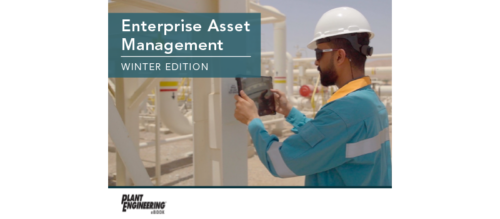Four tips for selecting an EAM solution
Companies looking to select an enterprise asset management (EAM) solution should be sure it can track all assets through the lifecycle and that it can integrate with an enterprise resource planning (ERP) system.
An increasing number of industries in the manufacturing and distribution sectors are evaluating whether to select an enterprise asset management (EAM) solution to manage complex and costly equipment now in use, or that they plan to purchase in the upcoming year.
Manufacturing companies in automotive, aerospace, electronics, and other sectors seek to better utilize shop floor machinery, complex tooling and material handling equipment that they rely on for daily operations.
Distribution companies often maintain fleets of trucks and/or conveyer systems and fork lift trucks, thus EAM solutions help optimize the management of these assets.
Thus, more project-oriented sales assets are becoming mobile and add significant value to the success of a customer driven project. Tracking the usage and location of assets is vital to maintaining resource management visibility.
Industrial equipment distributors are also looking to select an EAM solution to manage after-sale service of installed equipment at customer sites enabling them to expand their value-added services.
What to look for when selecting an EAM solution
No matter the scenario, companies need to be strategic about improving the process of managing complex assembly and automation equipment and other machinery now in use on the shop floor. These solutions are often integrated with enterprise resource planning (ERP) systems and are often a modular set of applications that manage the acquisition, accounting depreciation, maintenance, repair and disposal of equipment.
Here are four of the more significant issues to keep in mind when selecting an EAM solution for an organization.
1. Select an EAM solution that fully tracks all assets throughout the full lifecycle. An automated solution must track equipment from production and material handling equipment such as cranes, lifts, and conveyers, to complex tooling and assembly, to vehicles, and other equipment that support the operation. The system must offer integrated features that track the full lifecycle from acquisition to disposal. This includes all activities relating to the acquisition and maintenance of all operational assets and equipment within the organization.
2. Select an EAM solution that integrates with an ERP. Ensure that the solution is, or can be, integrated with the operational ERP system to capture asset utilization and maintenance history. An EAM solution is often viewed as an add-on to ERP, thus it tends to be overlooked by many companies when they evaluate new technology. Integrated EAM with a good predictive maintenance capability can significantly help avoid serious downtime and expensive production disruption.
3. Select and implement with all users in mind. Be sure to involve key process owners and fully understand the requirements and touch points for effective asset management. Consider any external partners, supply chain organizations or other resources that need EAM access as part of the extended supply chain.
4. Select an EAM solution that offers robust functionality. Core features and functions must cover all tracking and real-time reporting of the acquisition, accounting depreciation, maintenance, repair and disposal of equipment. Also be sure the EAM solution can integrate with other enterprise systems, offers mobile accessibility and integrates with data collection devices like barcode scanners and other devices and technology such as GPS and RFID.
In addition, look for predictive analysis such as predictive maintenance tracking and predictive capital allocation requirements.
Increasing investments in plant equipment and machinery improve a company’s efficiency and drive productivity improvements. It pays to track the lifecycle of these assets as effectively as possible.
Martin Davis is a consultant at Ultra Consultants, a CFE Media content partner. This article originally appeared on Ultra Consultants’ Blog. Edited by Chris Vavra, production editor, Control Engineering, CFE Media, cvavra@cfemedia.com.
Original content can be found at ultraconsultants.com.
Do you have experience and expertise with the topics mentioned in this content? You should consider contributing to our CFE Media editorial team and getting the recognition you and your company deserve. Click here to start this process.



